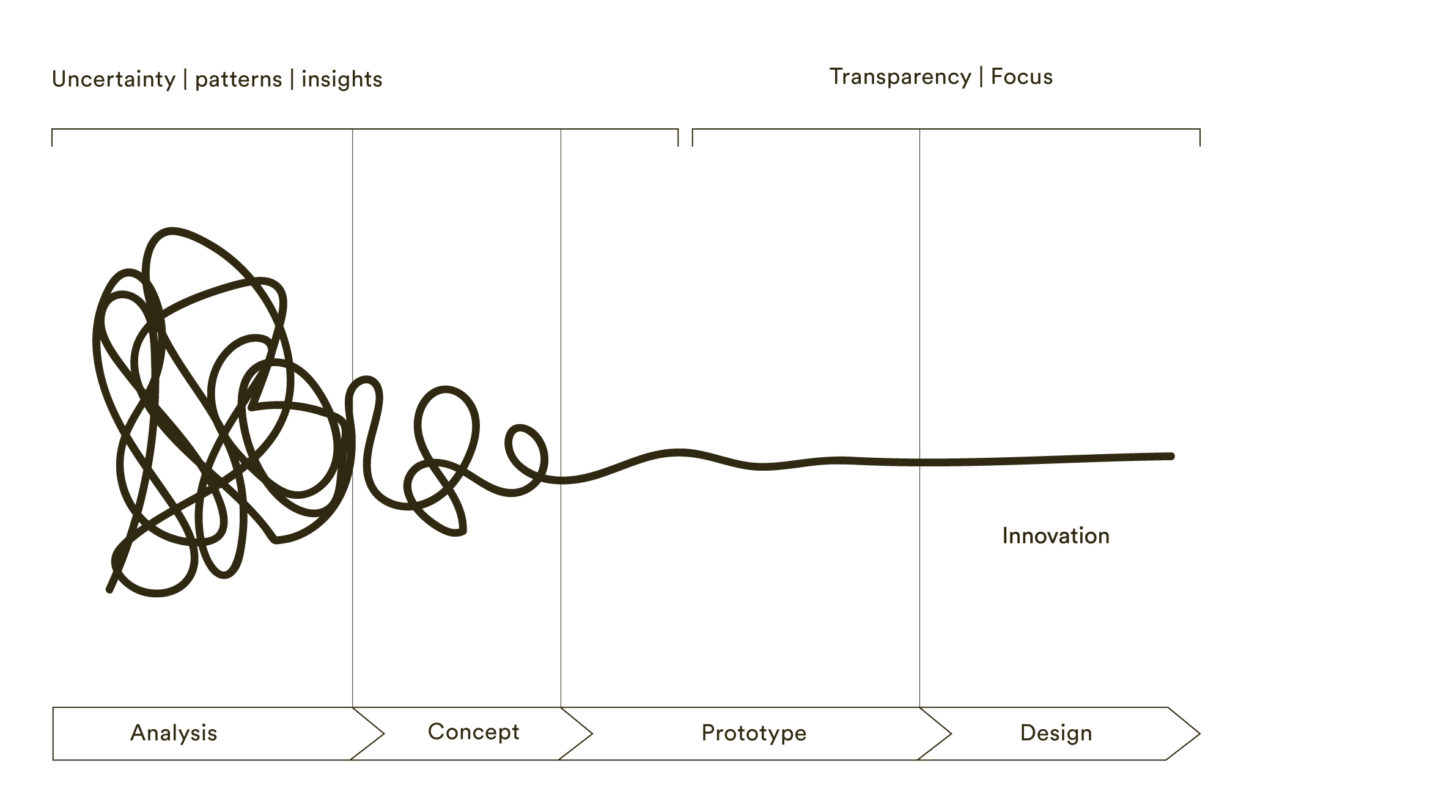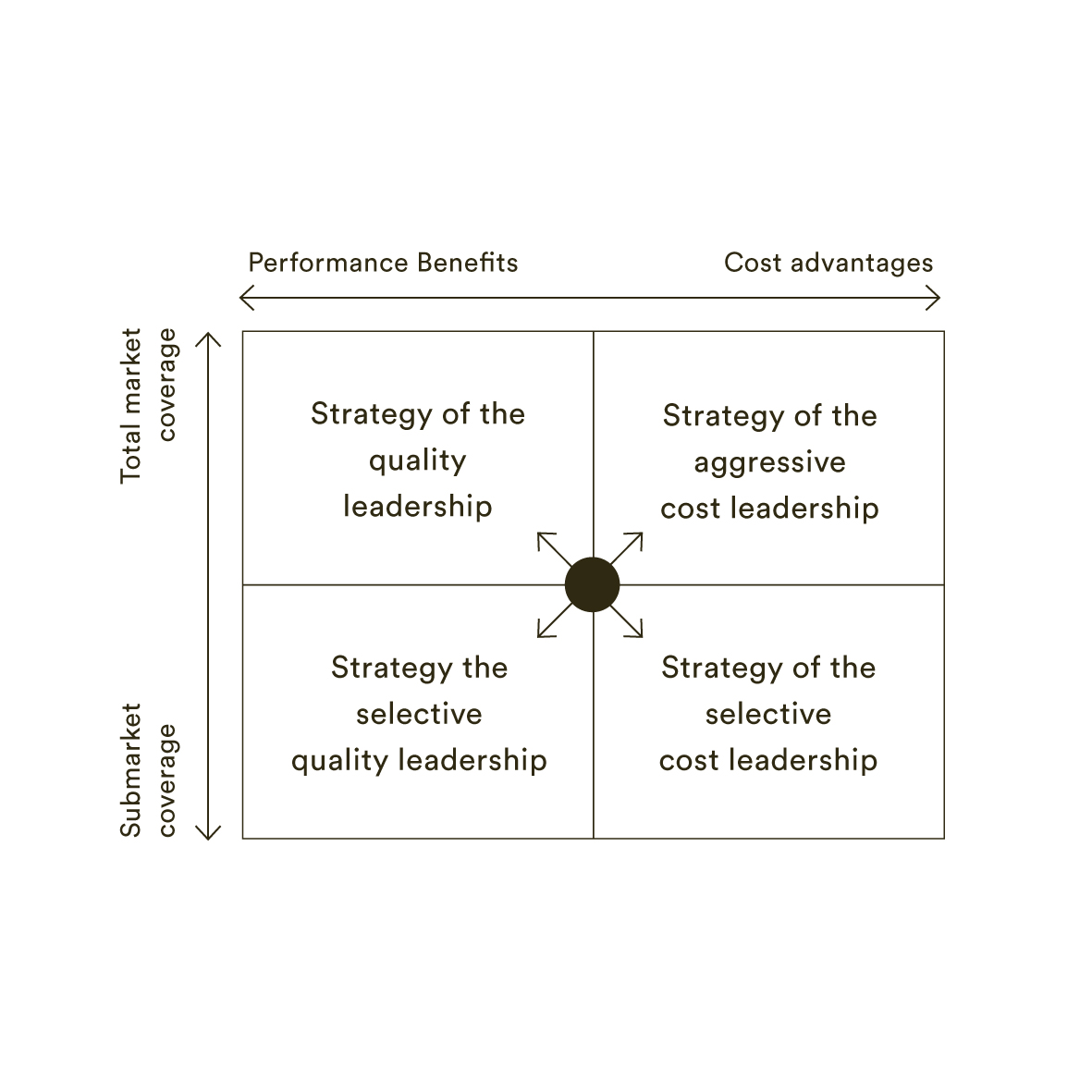Concept development
Based on the foundations resulting from the analyses, we develop the strategic roadmap for your organisation. In full awareness of the uniqueness of your corporate vision, turning this vision into reality is only possible with solutions that are fully tailored to your individual situation. Although many aspects of successful planning and implementation are based on Quant’s experience in similar environments and our know-how in a wide variety of business areas around the globe, our ideas and solutions are created exclusively against the backdrop of our in-depth engagement with local conditions: the daily life, culture, values and customs of the respective place in which a project is to be delivered.
The Golden Circle
Simon Sinek’s “Golden Circle” approach is based on an analysis of the world’s most successful managers and companies. Sinek was able to demonstrate that all successful brands feature the same patterns of thought, action and communication – and that these are diametrically different to common patterns. The Golden Circle consists of three circles. The core is the “Why”, the middle the “How”, and the outermost circle the “What”. Most companies begin with the outermost circle (What) and then focus on differentiation in the second circle (How). They often fail to engage with the core (Why). By contrast, successful companies start with the core, the mission (Why), then engage with the moment of differentiation (How) and only move on to the actual products (What) at the end. This is the method that Quant applies in strategy and positioning processes.
Design Thinking
Design Thinking is based on the assumption that problems are easier to solve when people from a variety of disciplines collaborate in an environment that fosters creativity. The process is aligned with the work of designers, which is regarded as a combination of understanding, observation, idea generation, refinement, execution and learning. Quant applies the Design Thinking method within the project process in order to facilitate a creative, innovative yet structured co-creation approach in collaboration with you.

Lifestyles
Despite there being ever more data available, it is becoming increasingly difficult to understand customers. Why is this? At best, there is data available on how products are used, but hardly any information on the requirements during various life phases. The 18 lifestyles studied by the internationally leading Zukunftsinstitut make it possible to explore the relationships that different lifestyles have with your offering and then derive fundamental insights from this.
Competition-Matrix
The Competition Matrix is a concept introduced by Michael E. Porter that serves the development of strategies for determining the product policy for a company’s individual business areas. Porter thereby seeks to systematise the potential strategies that a company can pursue in order to gain a competitive advantage in the relevant market – for example, with a quality-leadership/selective quality-leadership strategy that accentuates the performance advantages of products. This strategic approach is contrasted with a focus on cost advantages, i.e. a cost-leadership/selective cost-leadership strategy.

Customer Life Time Value
As the name suggests, the Customer Life Time Value (CLV) can be interpreted as an average value that a customer assigns a company over the years or will assign it in the future. Past revenue as well as projected future turnover – the customer potential – is taken into account when calculating this value. Companies use the CLV in order to more efficiently tailor their marketing measures to their customers. Thus, for example, a higher CLV justifies bigger budgets for supporting a certain customer group.
Business Plan
Quant creates comprehensive business plans for its clients. During the initial phase, the business plan serves to define the managerial cornerstones, visions and goals underpinning an organisation. In the second phase, the plan provides potential business partners and investors with a detailed overview of the company’s opportunities and risks. A business plan is also advisable when there is a development process pending or when the company is dependent on the support of third parties.
Partnership Concept
The acquisition of partner funding requires an integral and targeted approach. Quant develops comprehensive, individual and long-term partnership concepts in which the partners are actively involved in the development process using a co-creation approach. This facilitates a collaboration between equals and in line with the strategic goals. We design holistic partnership concepts for you together with the communication documents, and work with you to acquire partner funding.